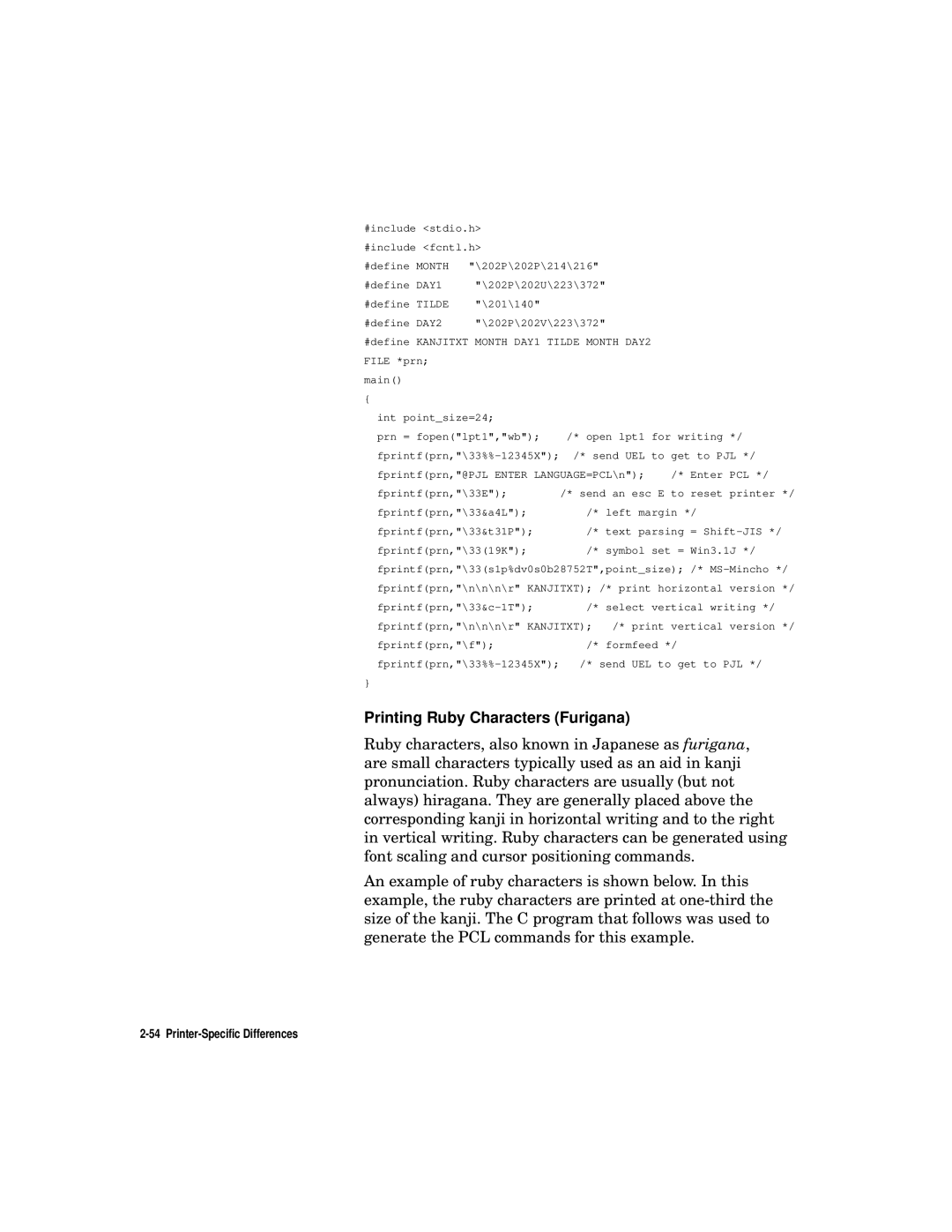#include <stdio.h> |
|
| |
#include <fcntl.h> |
|
| |
#define MONTH | "\202P\202P\214\216" |
| |
#define DAY1 | "\202P\202U\223\372" |
| |
#define TILDE | "\201\140" |
|
|
#define DAY2 | "\202P\202V\223\372" |
| |
#define KANJITXT MONTH DAY1 TILDE MONTH DAY2 |
| ||
FILE *prn; |
|
|
|
main() |
|
|
|
{ |
|
|
|
int point_size=24; |
|
| |
prn = fopen("lpt1","wb"); | /* open lpt1 for writing */ | ||
/* send UEL to get to PJL */ | |||
fprintf(prn,"@PJL ENTER LANGUAGE=PCL\n"); | /* Enter PCL */ | ||
fprintf(prn,"\33E"); | /* send an esc E to reset printer */ | ||
fprintf(prn,"\33&a4L"); | /* left margin */ | ||
fprintf(prn,"\33&t31P"); | /* text parsing = | ||
fprintf(prn,"\33(19K"); | /* symbol set = Win3.1J */ | ||
fprintf(prn,"\33(s1p%dv0s0b28752T",point_size); /*
fprintf(prn,"\n\n\n\r" KANJITXT); /* print vertical version */
fprintf(prn,"\f"); | /* formfeed */ |
/* send UEL to get to PJL */ | |
} |
|
Printing Ruby Characters (Furigana)
Ruby characters, also known in Japanese as furigana, are small characters typically used as an aid in kanji pronunciation. Ruby characters are usually (but not always) hiragana. They are generally placed above the corresponding kanji in horizontal writing and to the right in vertical writing. Ruby characters can be generated using font scaling and cursor positioning commands.
An example of ruby characters is shown below. In this example, the ruby characters are printed at
